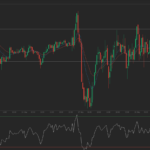 Yesterday’s trade saw USD/CAD within the range of 1.3816-1.3941. The pair closed at 1.3836, falling 0.42% on a daily basis and marking its fourth drop in the past six trading days. The daily low was a higher-low test of the low from Monday.
Yesterday’s trade saw USD/CAD within the range of 1.3816-1.3941. The pair closed at 1.3836, falling 0.42% on a daily basis and marking its fourth drop in the past six trading days. The daily low was a higher-low test of the low from Monday.
At 9:33 GMT today USD/CAD was up 0.14% for the day to trade at 1.3862. The pair touched a daily high at 1.3870 at 8:45 GMT, testing the range resistance level (R3), and a daily low at 1.3829 during early Asian trade. Resistance may be encountered within the 1.3865-1.3880 area and after that – at the psychological 1.3900 level. Support, on the other hand, may be received at the hourly 200-period EMA (1.3848), after that – within the 1.3825-1.3835 area and finally – within the 1.3810-1.3815 area, where support have been received in the past few trading days.
The Canadian dollar has recently been heavily influenced by a persistent decline in prices of oil. Crude oil futures have declined in 12 out of the past 21 trading days. Oil futures for February delivery were down 0.81% on the day to trade at $36.97 per barrel as of 9:30 GMT, after going down as low as $36.87 earlier. On December 21st the commodity touched a daily low of $33.98 a barrel, which has been the lowest price level since February 13th 2009, when oil futures plunged to as low as $33.81 per barrel. Crude oil has expanded losses to 11.25% of its value so far in December from an 11.22% slump as of December 29th.
On Wednesday USD/CAD trading may be influenced by one macroeconomic report listed below.
Fundamentals
United States
Pending Home Sales
The index of pending home sales in the United States probably rose for a second month in a row in November, going up at a monthly rate of 0.5%, according to the median estimate by experts. In October pending home sales rose 0.2%.
In annual terms, the index of pending home sales advanced 3.9% in October, which has been a 14th consecutive month of increase.
When a sales contract is accepted for a property, it is recorded as a pending home sale. As an indicator the index provides information on the number of future home sales, which are in the pipeline. It gathers data from real estate agents and brokers at the point of a sale and is currently the most accurate indicator regarding the US housing sector. It samples over 20% of the market. In addition, over 80% of pending house sales are converted to actual home sales within 2 or 3 months. Therefore, this index has a predictive value about actual home sales.
In case pending home sales increased at a faster pace than anticipated, this would have a moderate bullish effect on the US dollar. The National Association of Realtor’s (NAR) will report on the official index performance at 15:00 GMT.
Bond Yield Spread
The yield on Canada’s 2-year government bonds went as high as 0.512% on December 29th, after which it closed at 0.502% to add 1.5 basis points (0.015 percentage point) compared to December 24th. It has been the 11th gain in the past 25 trading days.
The yield on US 2-year government bonds climbed as high as 1.103% on December 29th, or the highest level since April 2010, after which it closed at 1.095 to add 3.6 basis points (0.036 percentage point) compared to December 28th. It has been the 22nd gain in the past 31 trading days and also a fifth consecutive one.
The spread between 2-year US and 2-year Canadian bond yields, which reflects the flow of funds in a short term, widened to 0.593% on December 29th from 0.519% on December 24th. The December 29th yield spread has been the largest one in at least eight months.
Meanwhile, the yield on Canada’s 10-year government bonds soared as high as 1.416% on December 29th, after which it slid to 1.407% at the close to add 2.8 basis points (0.028 percentage point) compared to December 24th. It has been the 10th gain in the past 25 trading days.
The yield on US 10-year government bonds climbed as high as 2.319% on December 29th, or the highest level since December 16th (2.332%), after which it slipped to 2.300% at the close to add 6.8 basis points (0.068 percentage point) compared to December 28th. It has been the 12th gain in the past 31 trading days.
The spread between 10-year US and 10-year Canadian bond yields widened to 0.893% on December 29th from 0.866% on December 24th. The December 29th yield difference has been the largest one in at least eight months.
Daily and Weekly Pivot Levels
By employing the Camarilla calculation method, the daily pivot levels for USD/CAD are presented as follows:
R1 – 1.3847
R2 – 1.3859
R3 (range resistance) – 1.3870
R4 (range breakout) – 1.3905
S1 – 1.3825
S2 – 1.3813
S3 (range support) – 1.3801
S4 (range breakout) – 1.3767
By using the traditional method of calculation, the weekly pivot levels for USD/CAD are presented as follows:
Central Pivot Point – 1.3870
R1 – 1.3948
R2 – 1.4073
R3 – 1.4151
S1 – 1.3745
S2 – 1.3667
S3 – 1.3542





